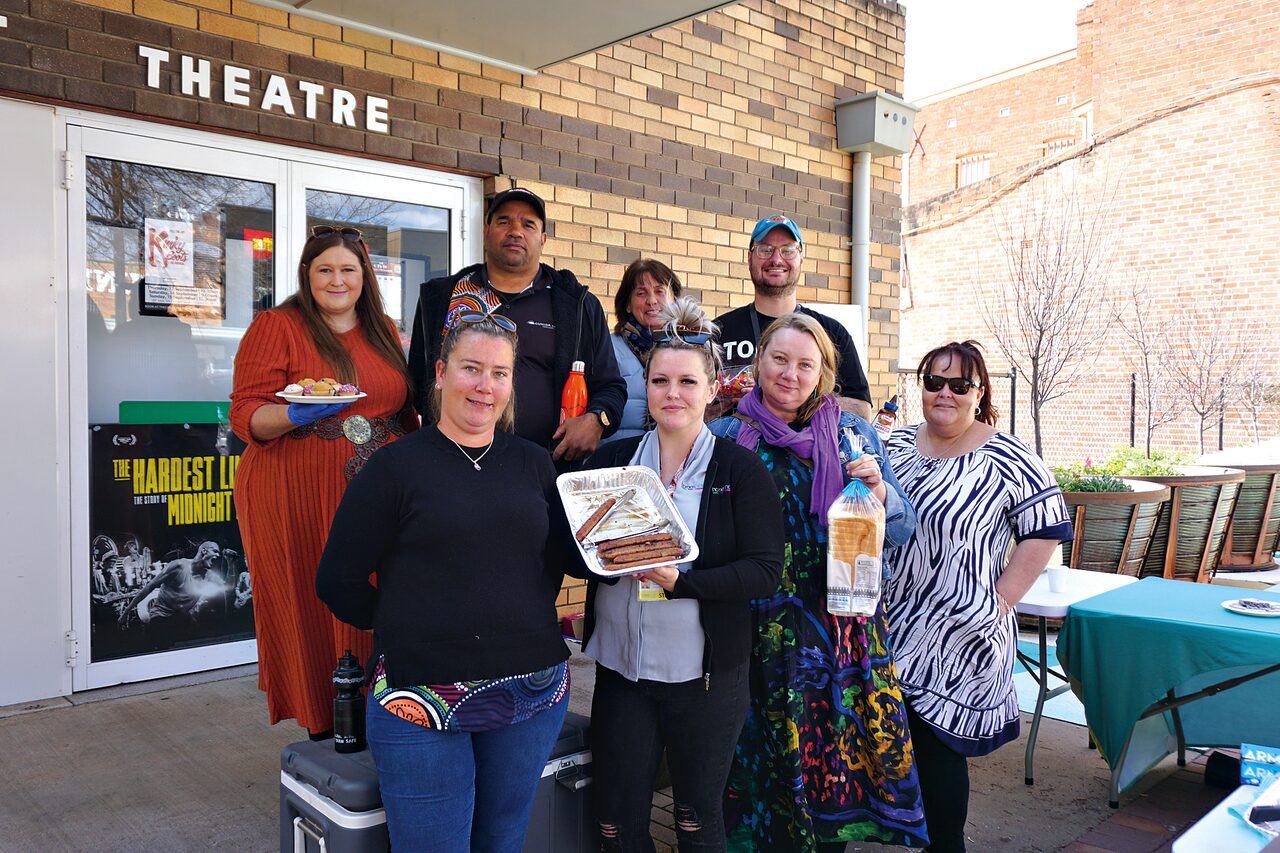Homeless Connect Week shines a light on a dark place; reminding people that homelessness exists, even if it is not always obvious.
The Gunnedah Community Action Team (GCAT) were at the Smithurst Forecourt on Friday to give people easy access to services.
It included a free barbecue along with treats and a sobering giveaway, a thermal blanket with a fleece sleeping bag. Not only does it provide warmth but Flourish Australia manager Kellie Ward also said it gives back some dignity.
Flourish Australia’s New England Regional Housing and Homelessness Service (NERSHH) is a program that takes preventative action. This might be through delivering programs to educate real estate agents on the early intervention or giving people tools to budget better or be better tenants.
Kellie mentioned that this early prevention is one of the many effective ways to stop people from becoming homeless.
“[Homelessness] is definitely present in town,” she said.
“The housing issue, the cost of living and people not being able to afford private rentals or to purchase houses has upped the demand [of services] and it is making the issue worse.
“It is all throughout New England unfortunately.”
Kellie said she witnessed about 40 people stop by the Smithurst Forecourt.
The message that she relayed was simple, “there is help out there and all you have to do is ask”.
“It does not matter which service, there will be a ‘no wrong door’ policy and they will link with the correct service you need,” she said.
Gunnedah Family Support and Homes North conducted a survey in February by recording numbers of street sleeping in well known areas.
Gunnedah Family Support’s Wil Houlcroft said that in the last three years he has conducted the survey, this year had the highest number of street sleepers “by a substantial amount”.
The survey discovered that people were residing in new places such as makeshift dwellings, by the river, in parks and in public spaces that are partially undercover.
Primary homelessness is the stereotypical homelessness; such as street sleeping, living in cars and generally anyone who is without housing.
Secondary homelessness is not as visible. People might be couch
surfing, living in transitional or temporary accommodation or living in unsafe long-term accommodation, such as a domestic violence situation, where there is no other option, or extreme housing affordability stress.
Wil stated that anyone who is paying more that 25 percent of their income on housing is in housing affordability stress.
“In Gunnedah, we have people who are paying up to 50 per cent or more of their income toward housing which means that they cannot afford the other basic necessities of life,” he said.
“They will more than likely end up homeless in the future.”
To order photos from this page click here



